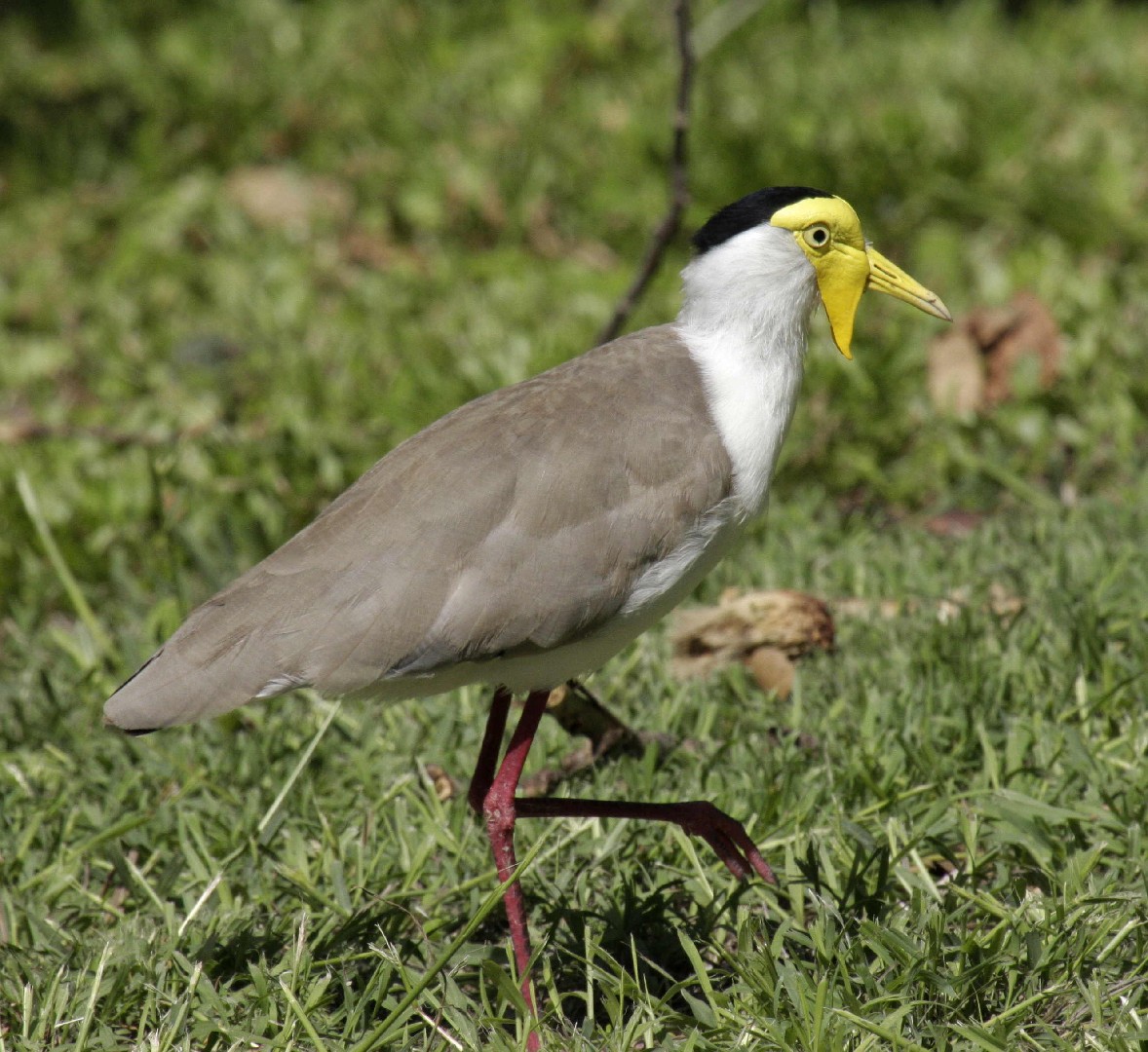Masked Lapwing
A species of Lapwings, Also known as Masked Plover Scientific name : Vanellus miles Genus : Lapwings
Masked Lapwing, A species of Lapwings
Also known as:
Masked Plover
Botanical name: Vanellus miles
Genus: Lapwings
Content
Description People often ask General Info
 Photo By Aviceda , used under CC-BY-SA-3.0 /Cropped and compressed from original
Photo By Aviceda , used under CC-BY-SA-3.0 /Cropped and compressed from original Description
The masked Lapwing is a relatively large bird mostly found in wetlands as well as on beaches and other coasts; this species is highly adaptable and is usually seen in developed areas as well. There are two subspecies, Vanellus miles miles and Vanellus miles novaehollandiae. They nest on open ground and will jealously guard their territory against any intruders.
Size
30 - 37 cm
Colors
Brown
Gray
White
Life Expectancy
20 years
Nest Placement
Ground
Feeding Habits
Masked Lapwing, primarily feeds on insects, their larvae, and earthworms. It exhibits foraging behavior, actively hunting its prey, often at dawn or dusk. Masked Lapwing possesses no unique dietary specializations, maintaining a generalized omnivorous diet.
Habitat
Masked Lapwing can be found in a wide variety of open habitats with a preference for short grass, including natural and cultivated environments such as pastures, fallow fields, and the margins of wetlands like lakes, lagoons, and temporary pools. Common in urban settings, including parks and playing fields, masked Lapwing often resides near water, yet it's also adapted to arid regions, coastal areas, and even high-altitude open woodlands. Their adaptable nature allows them to thrive from sea level up to elevations of at least 1800 meters.
Dite type
Insectivorous
People often ask
General Info
Feeding Habits
Bird food type
Bird Feeder Type

Ground
Behavior
Masked lapwings are shy and harmless in summer and autumn but are best known for their bold nesting habits, being quite prepared to make a nest on almost any stretch of open ground, including suburban parks and gardens, school ovals, and even supermarket carparks and flat rooftops. They can be particularly dangerous at airports where their reluctance to move from their nesting area – even for large aircraft – has resulted in several bird strikes. 
Distribution Area
Masked lapwings are most common around the edges of wetlands and in other moist, open environments, but are adaptable and can often be found in surprisingly arid areas. They can also be found on beaches and coastlines. Vanellus miles novaehollandiae spread naturally to Southland, New Zealand in the 1930s and has now spread throughout New Zealand, where it is recognised as a self-introduced native and known as the spur-winged plover. 